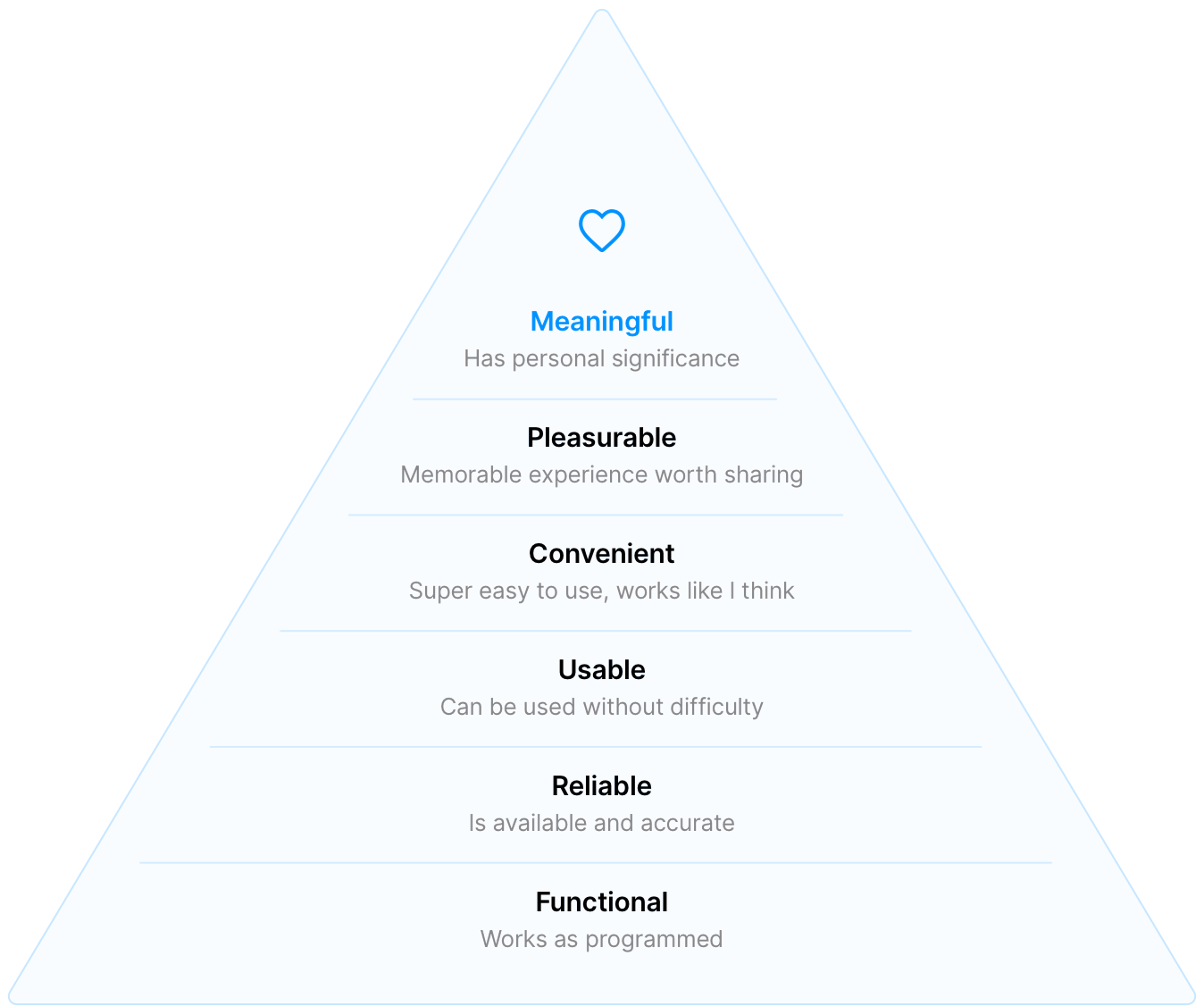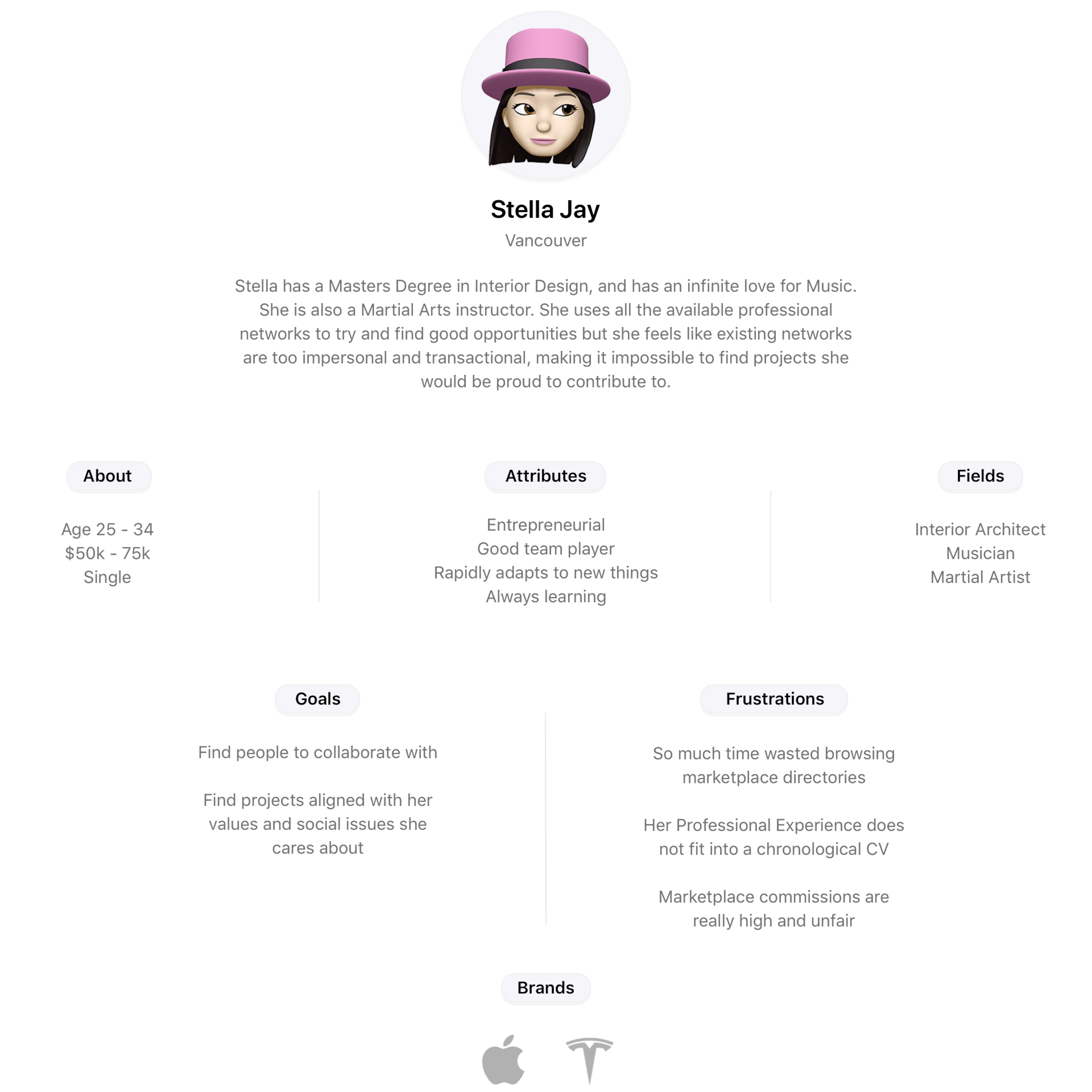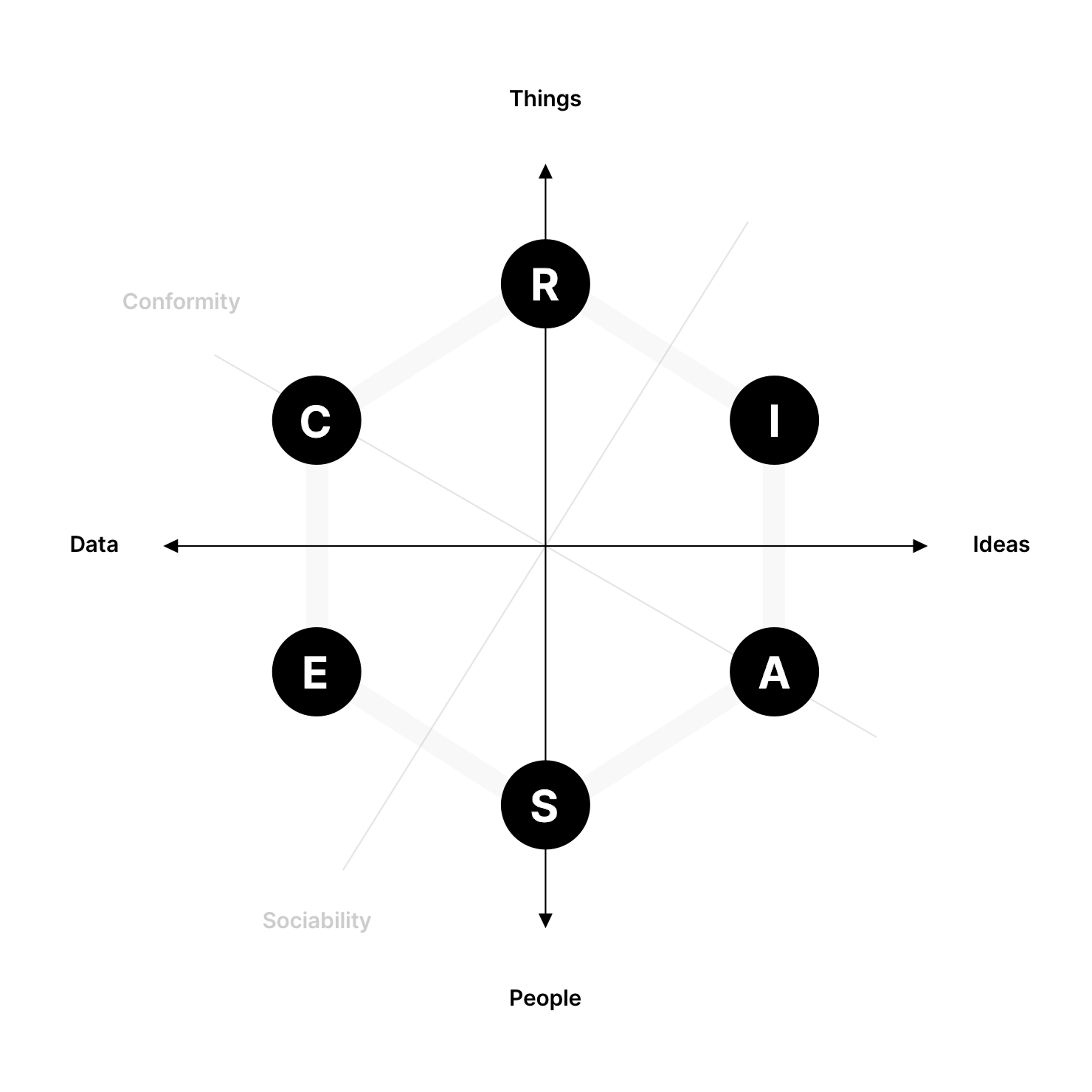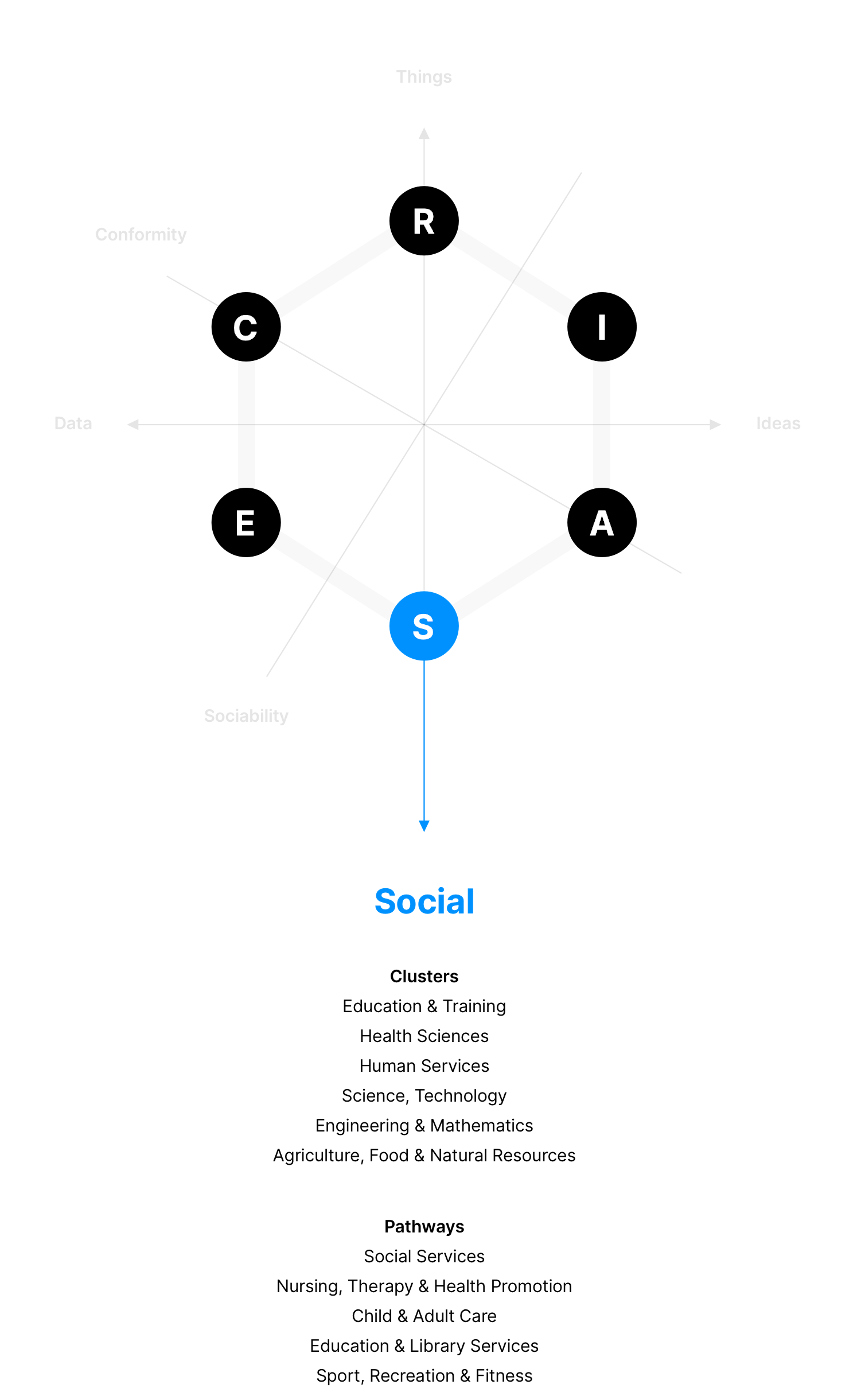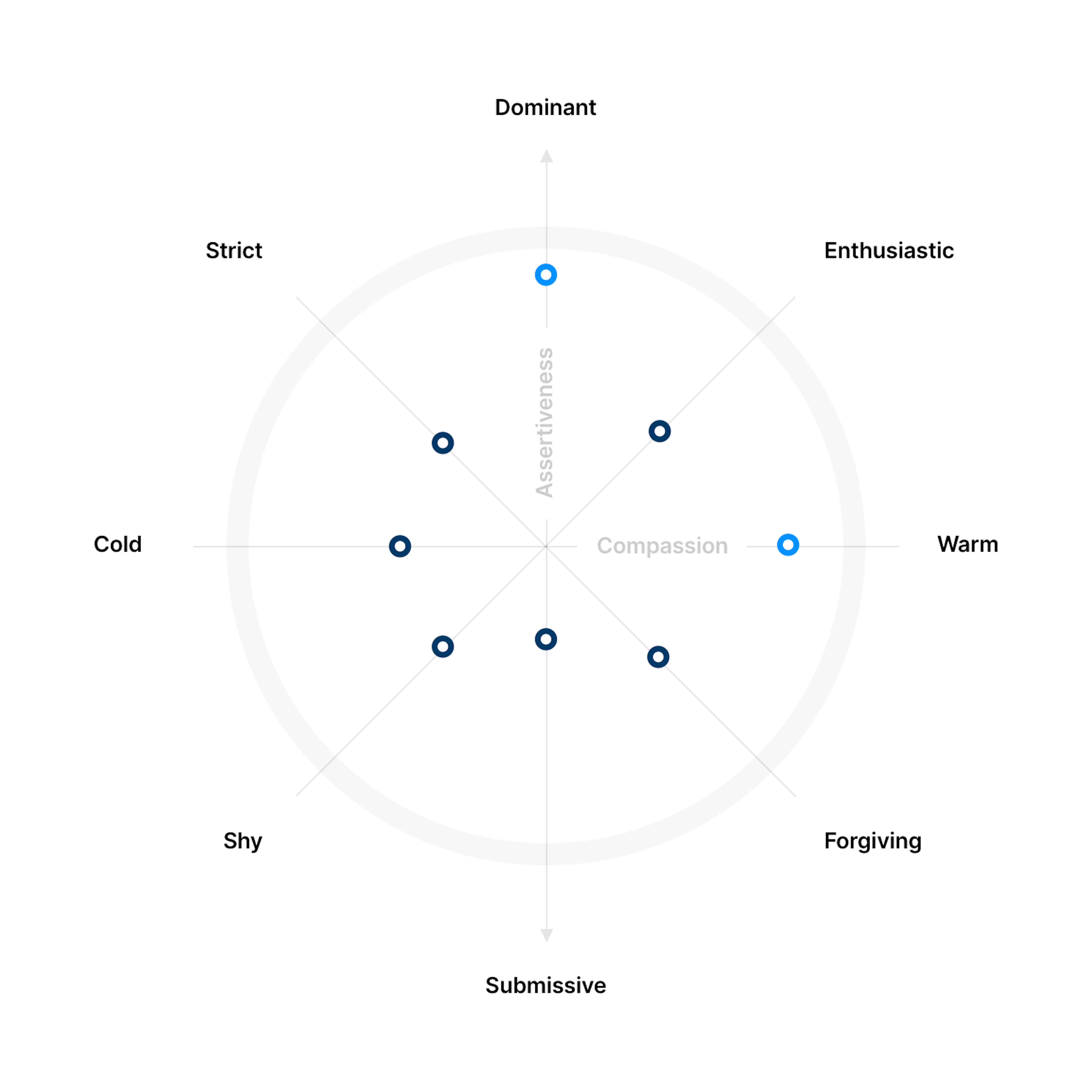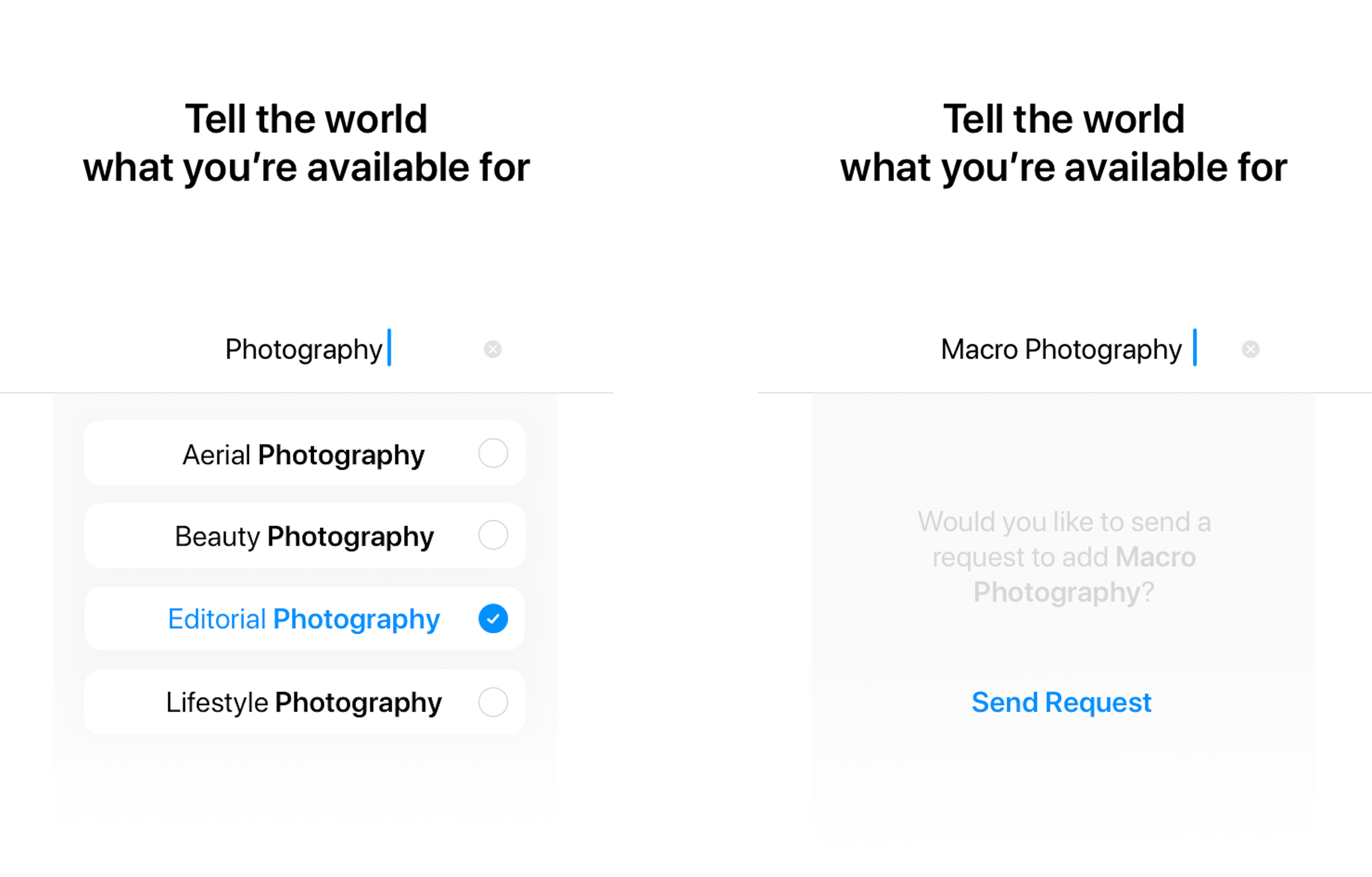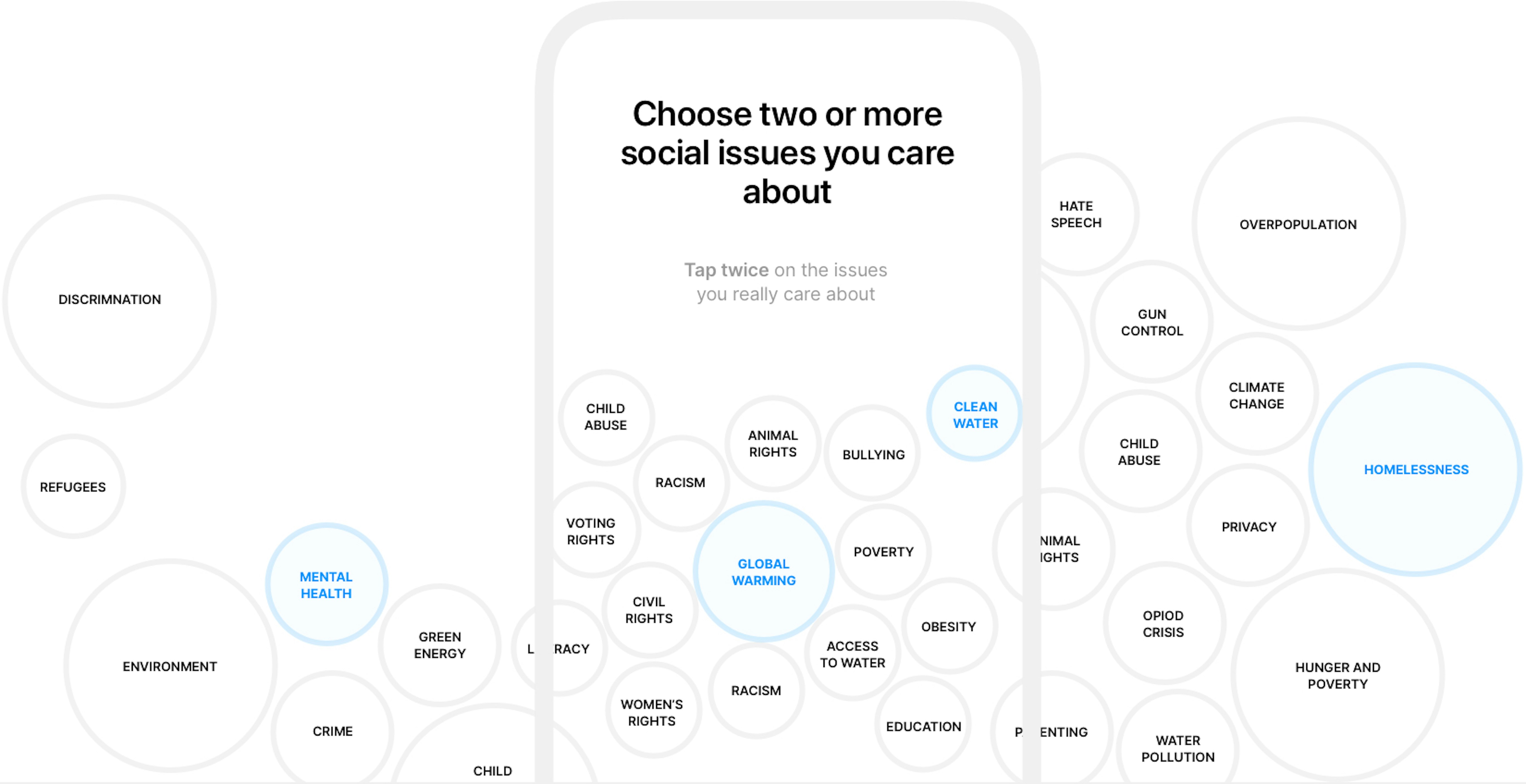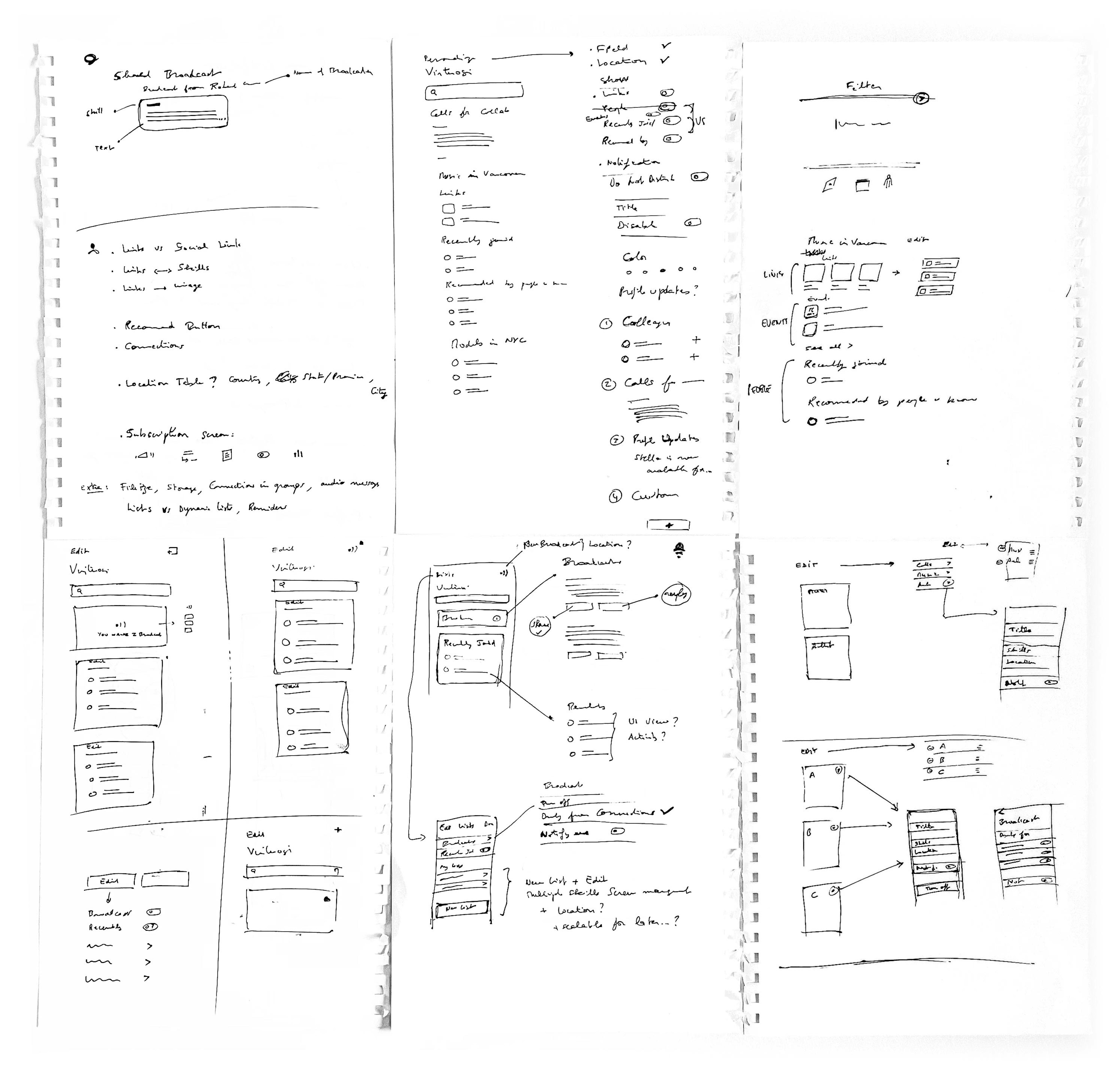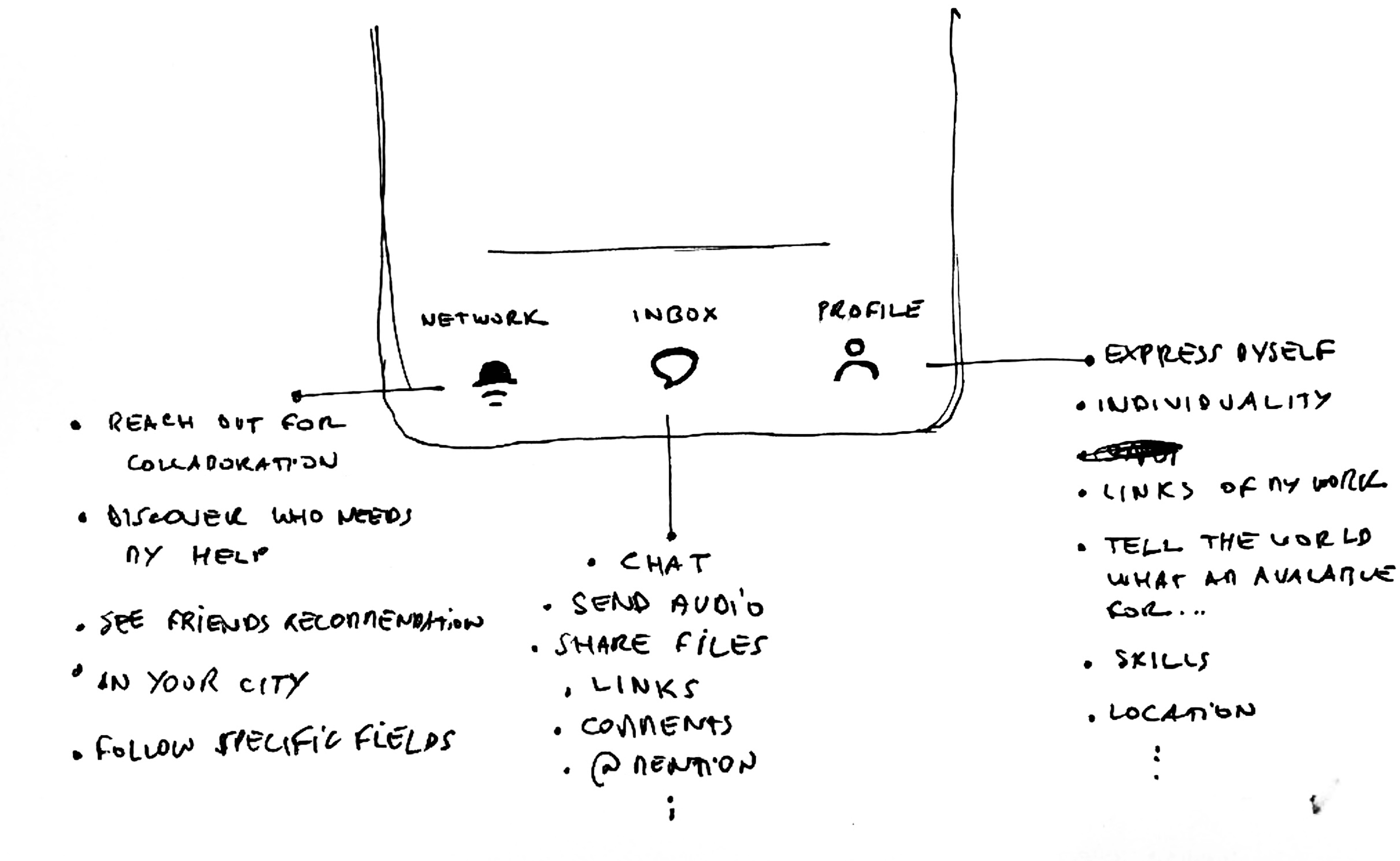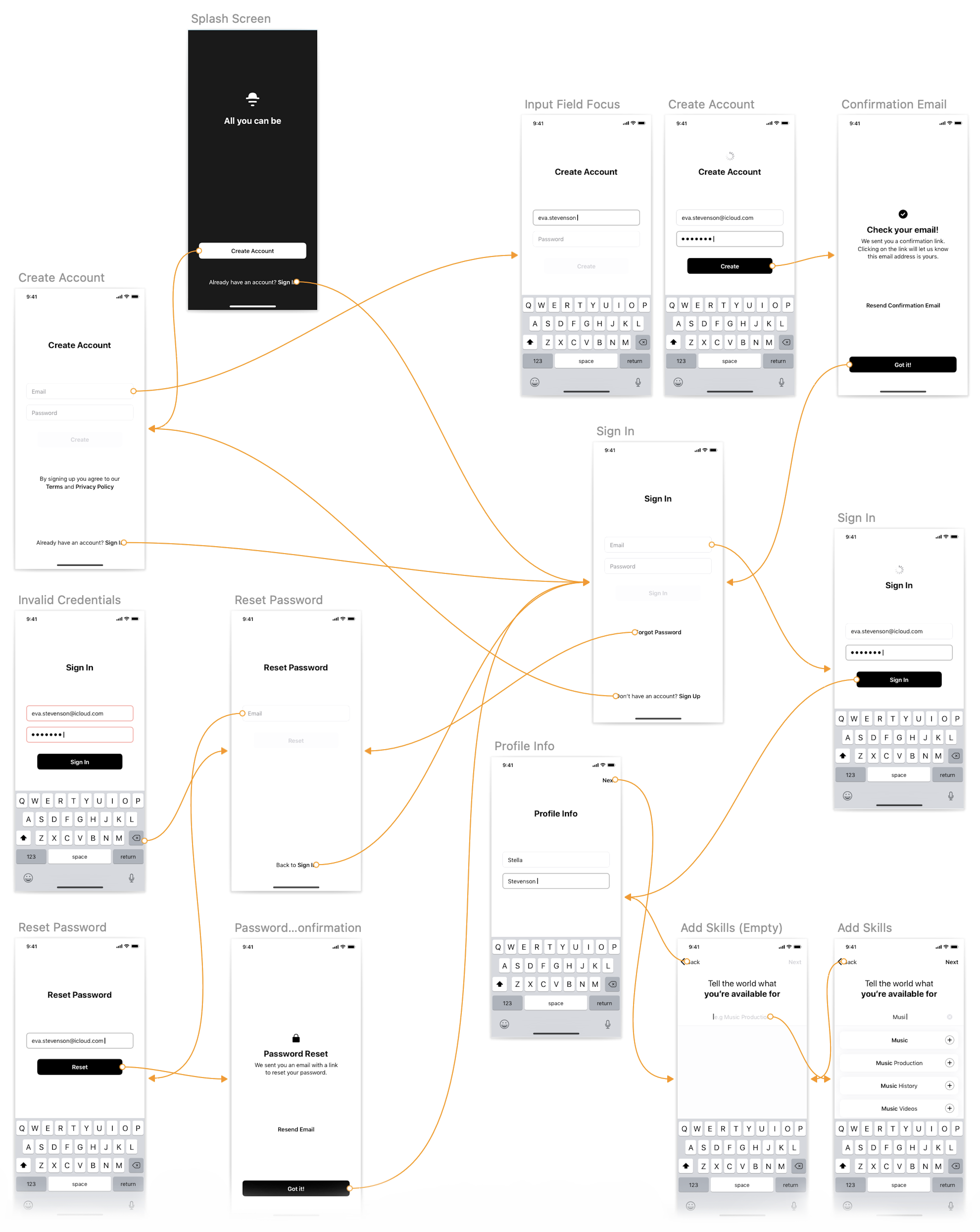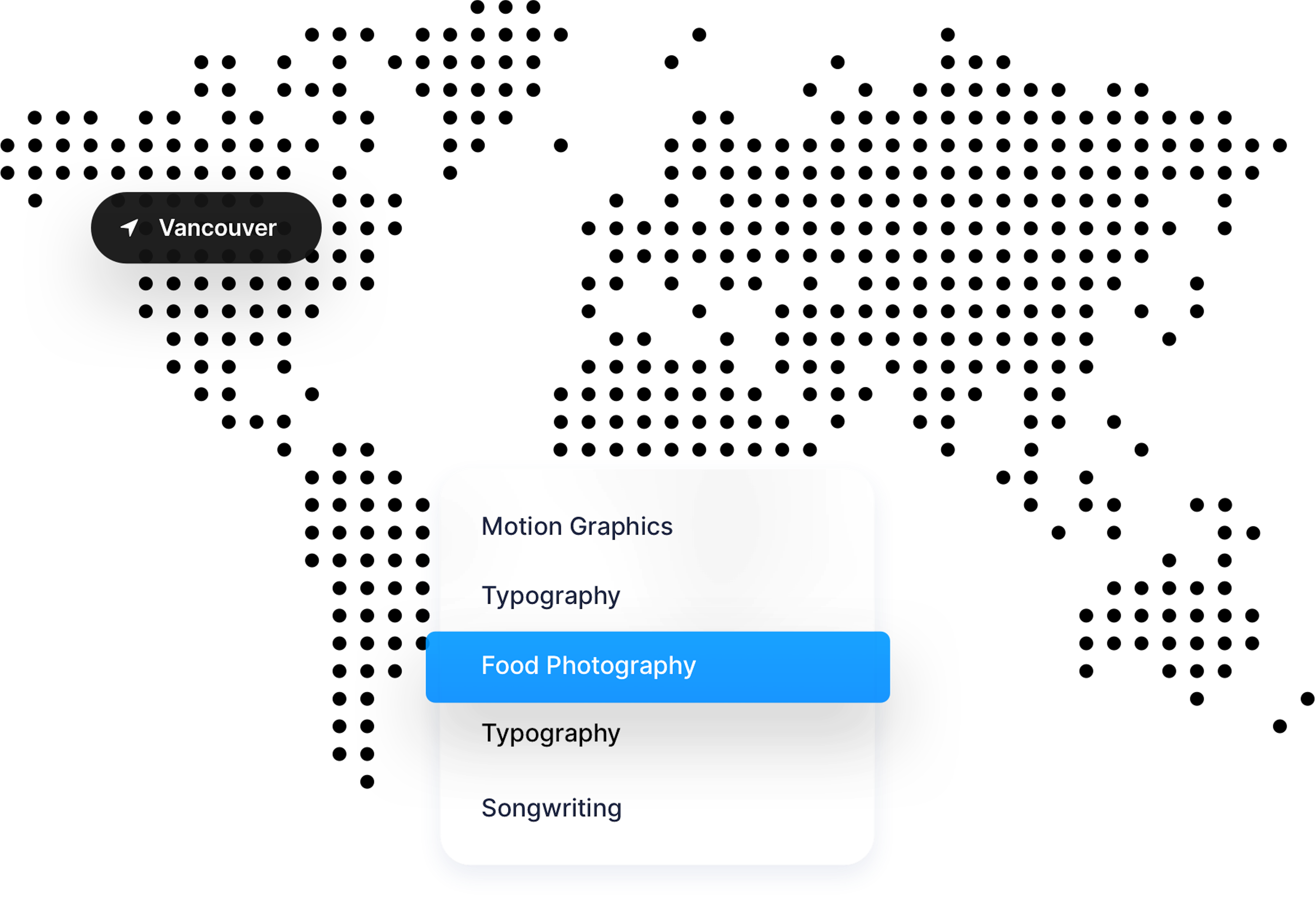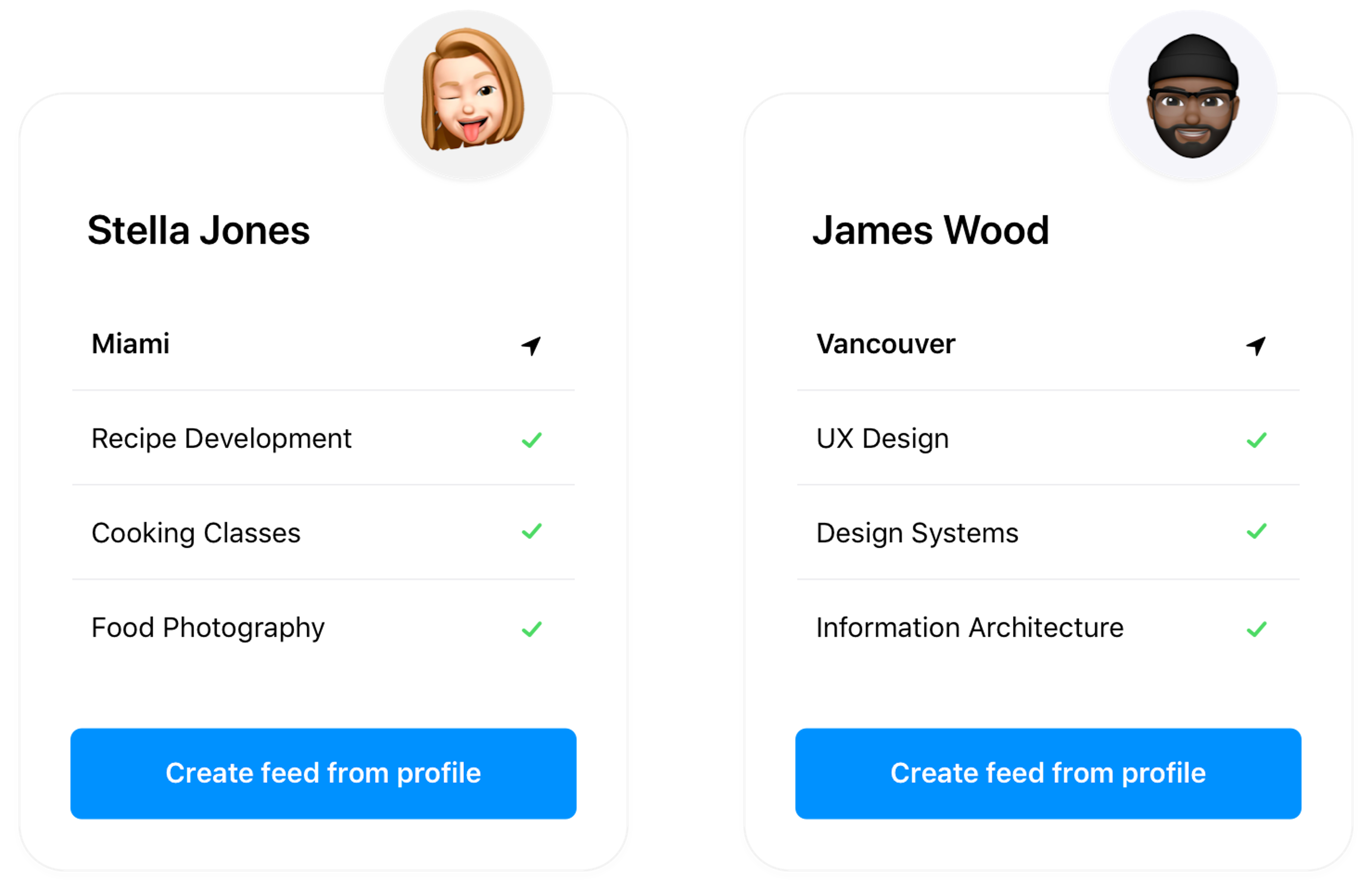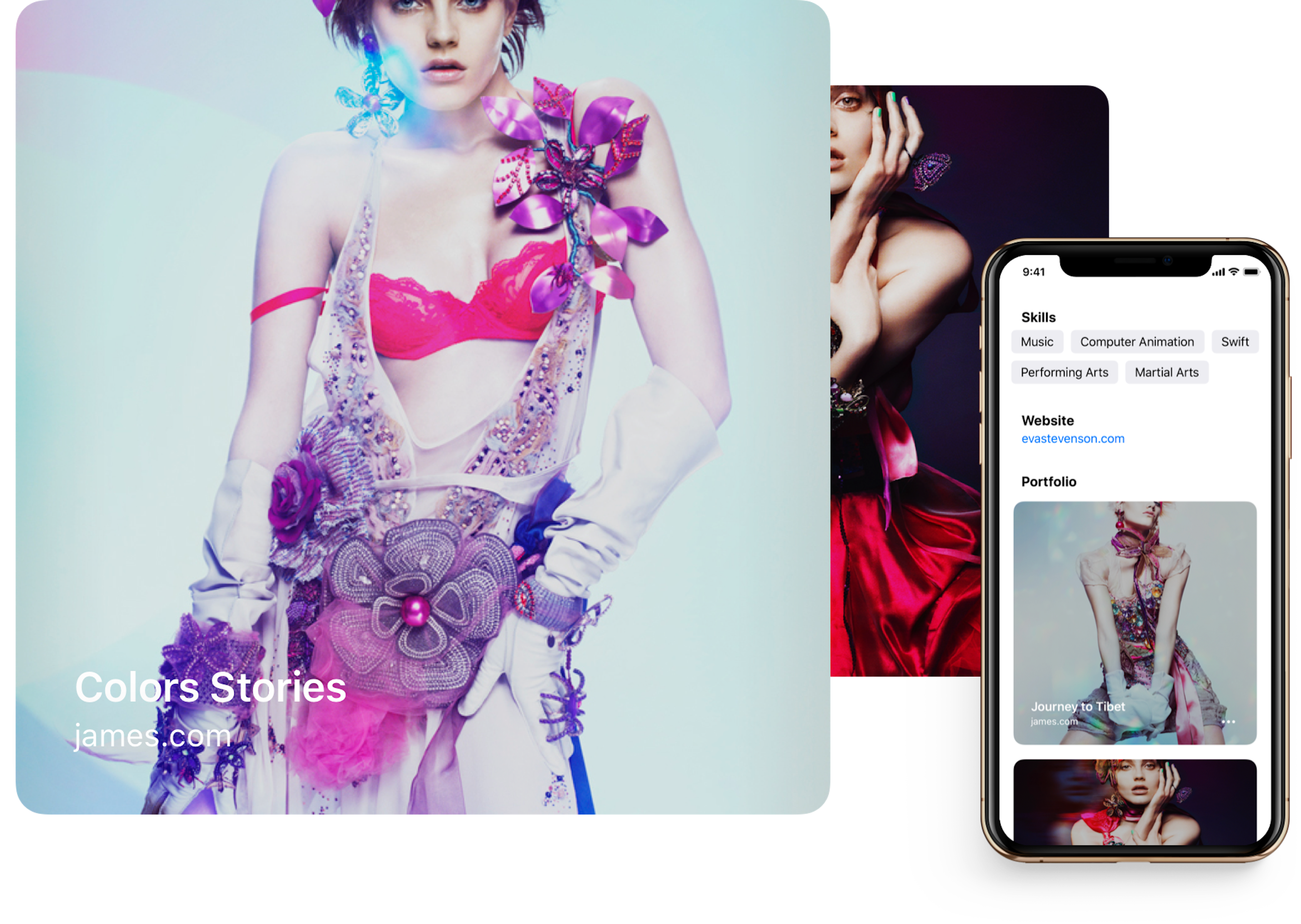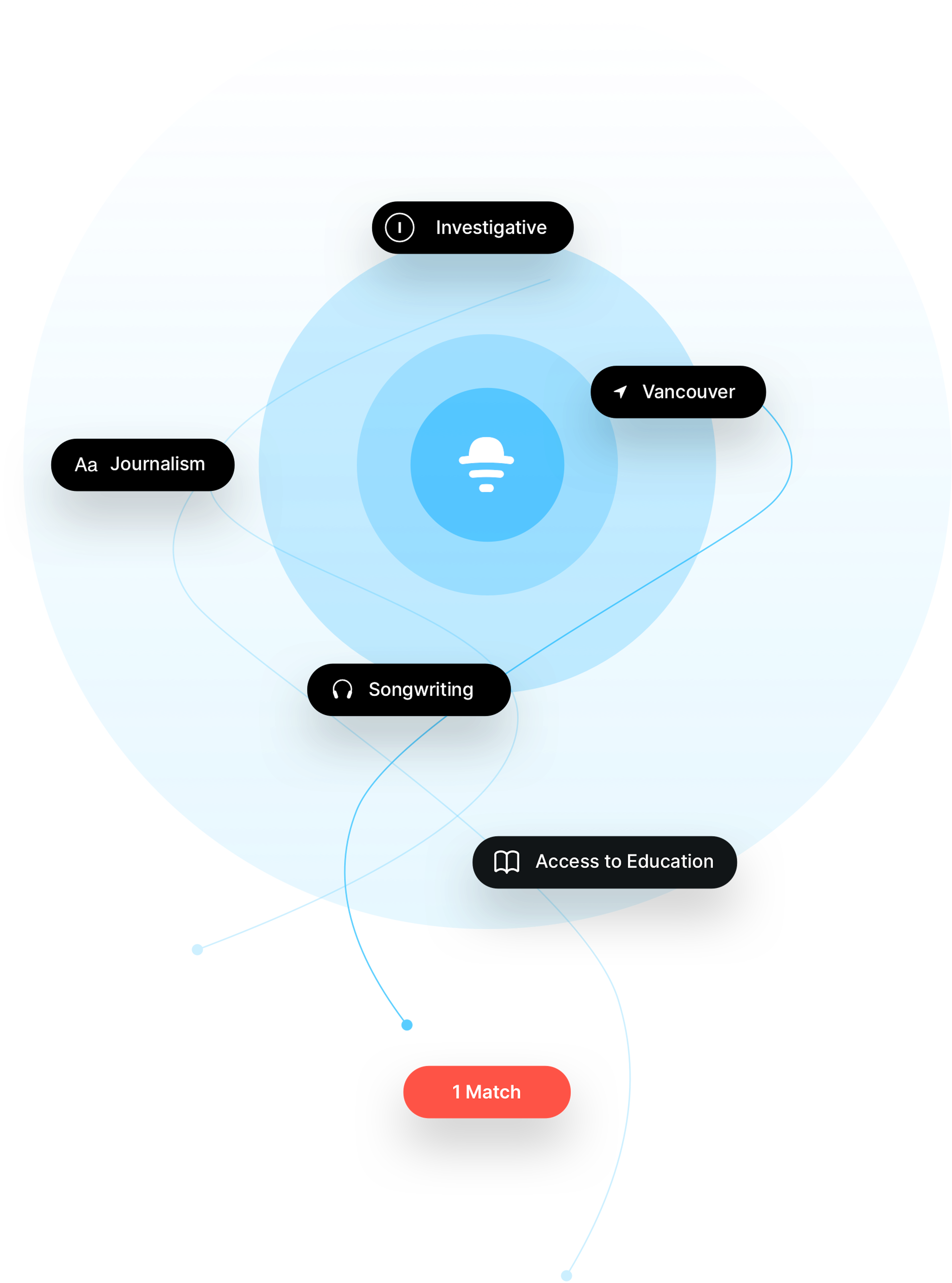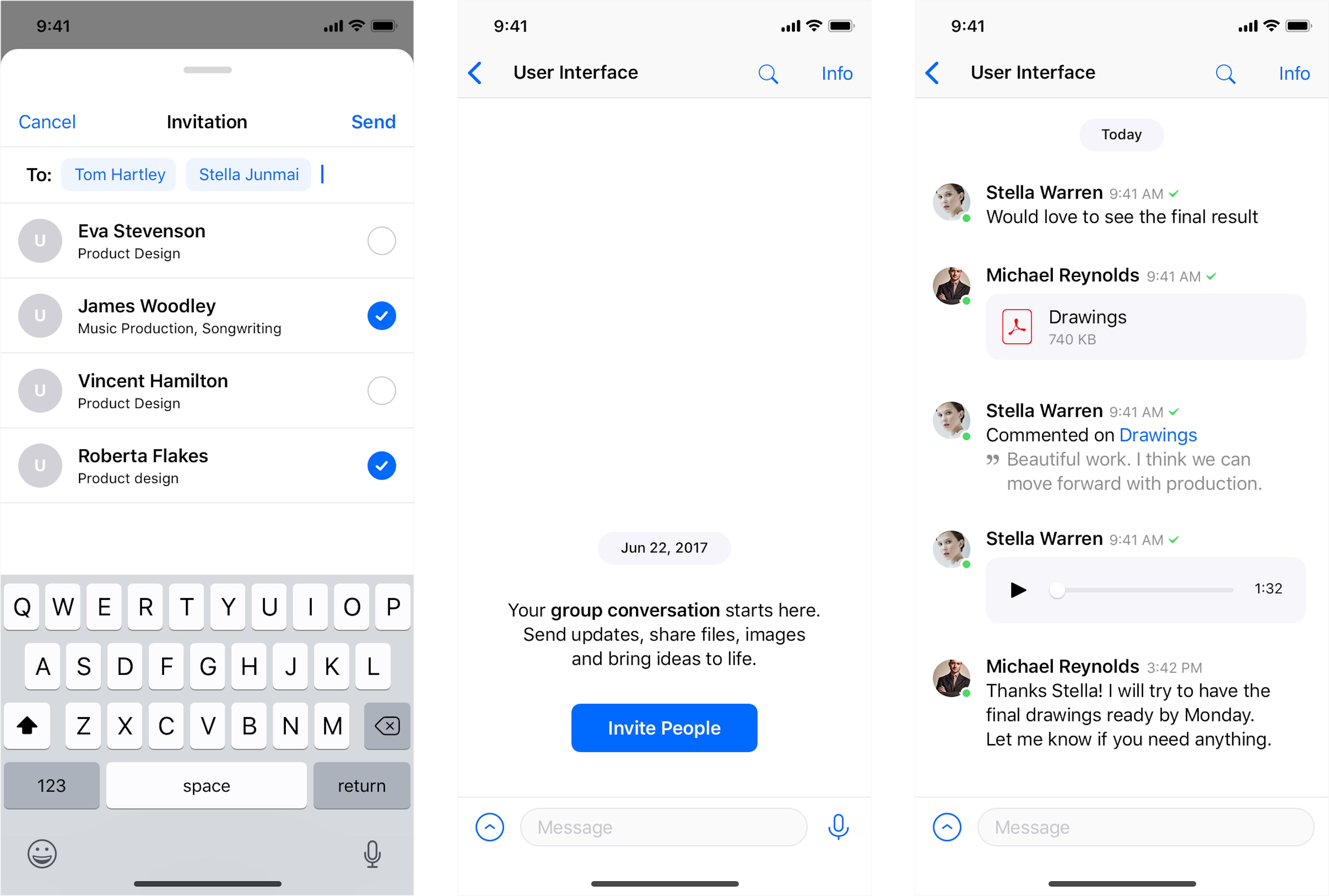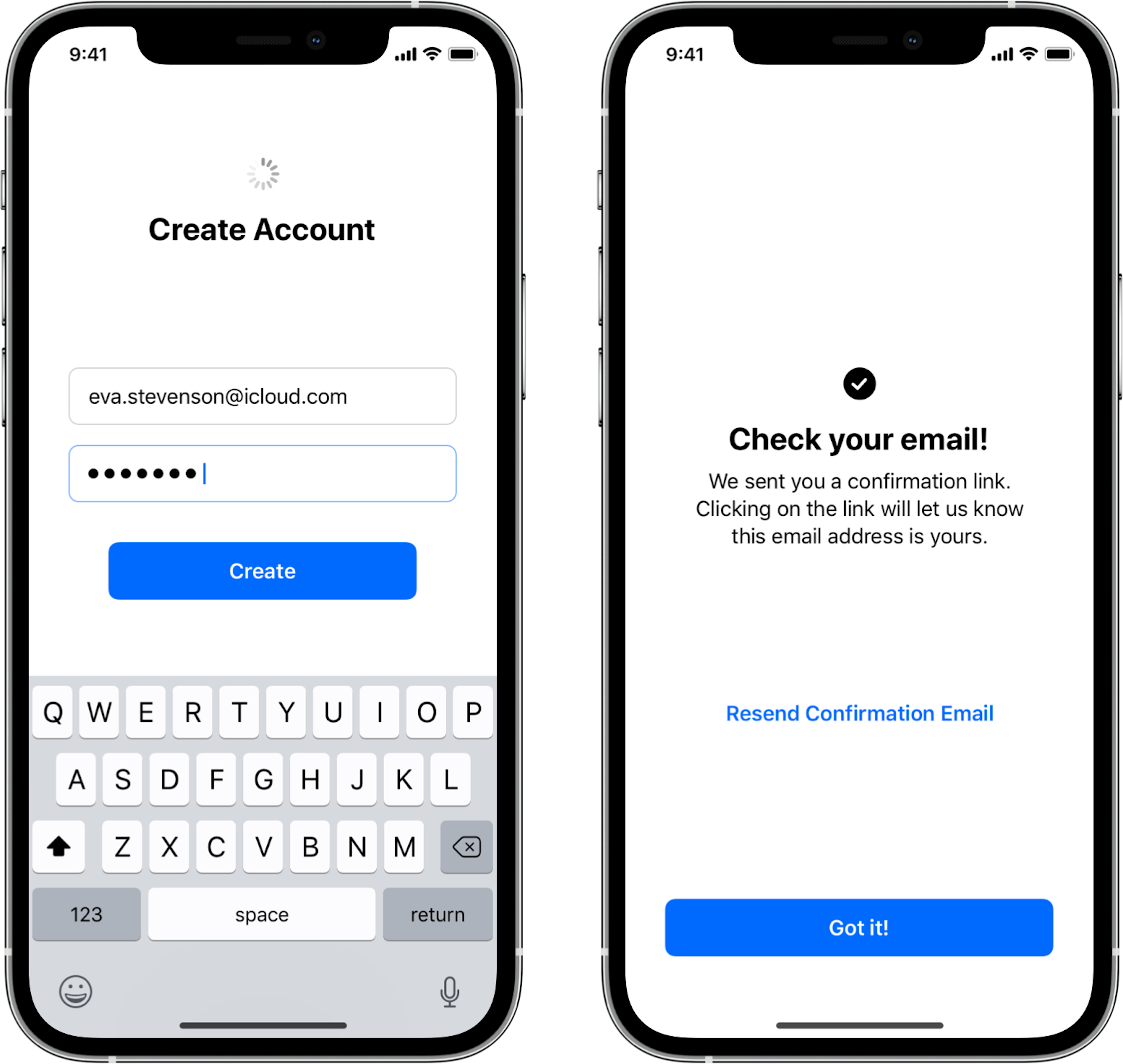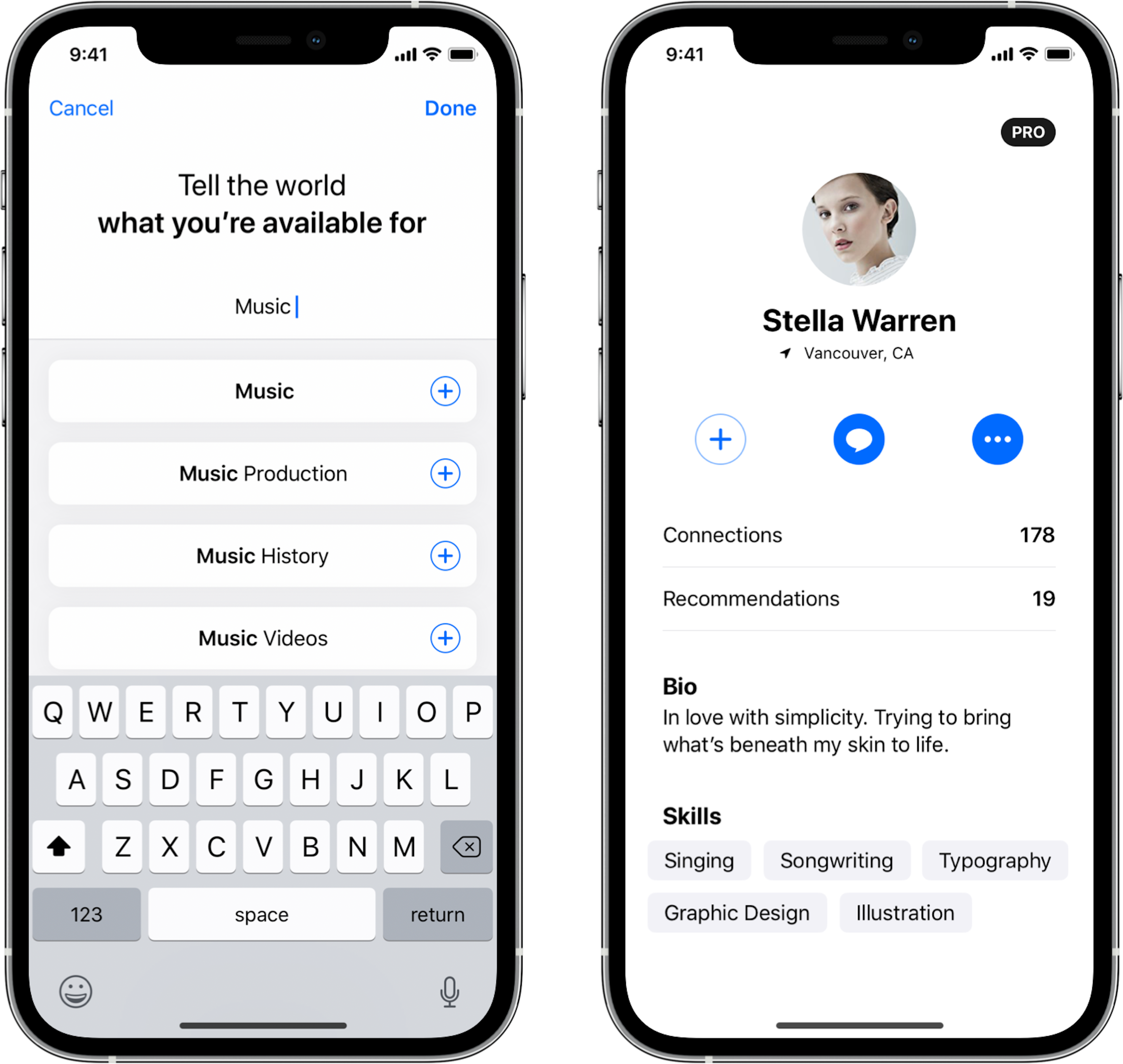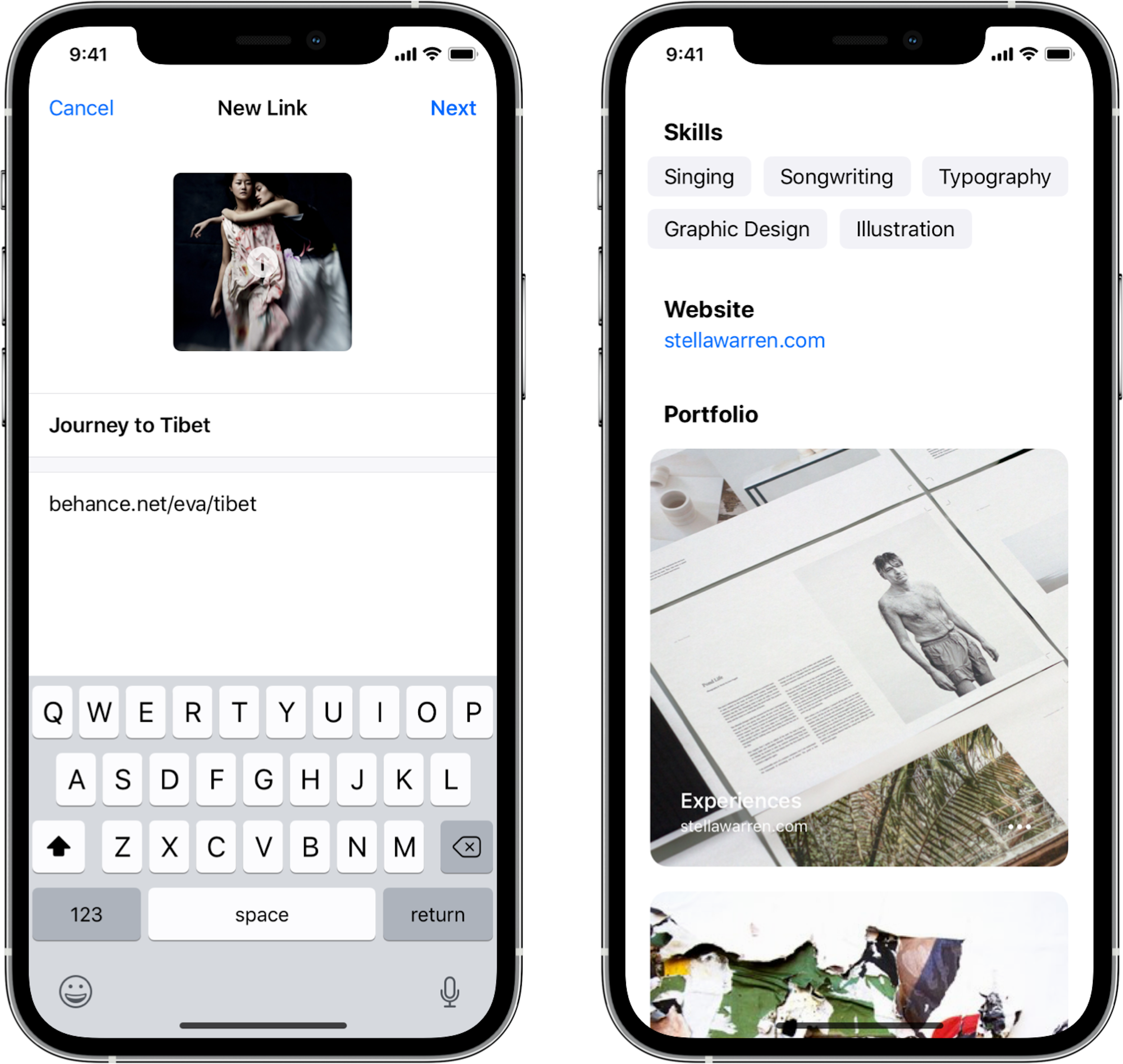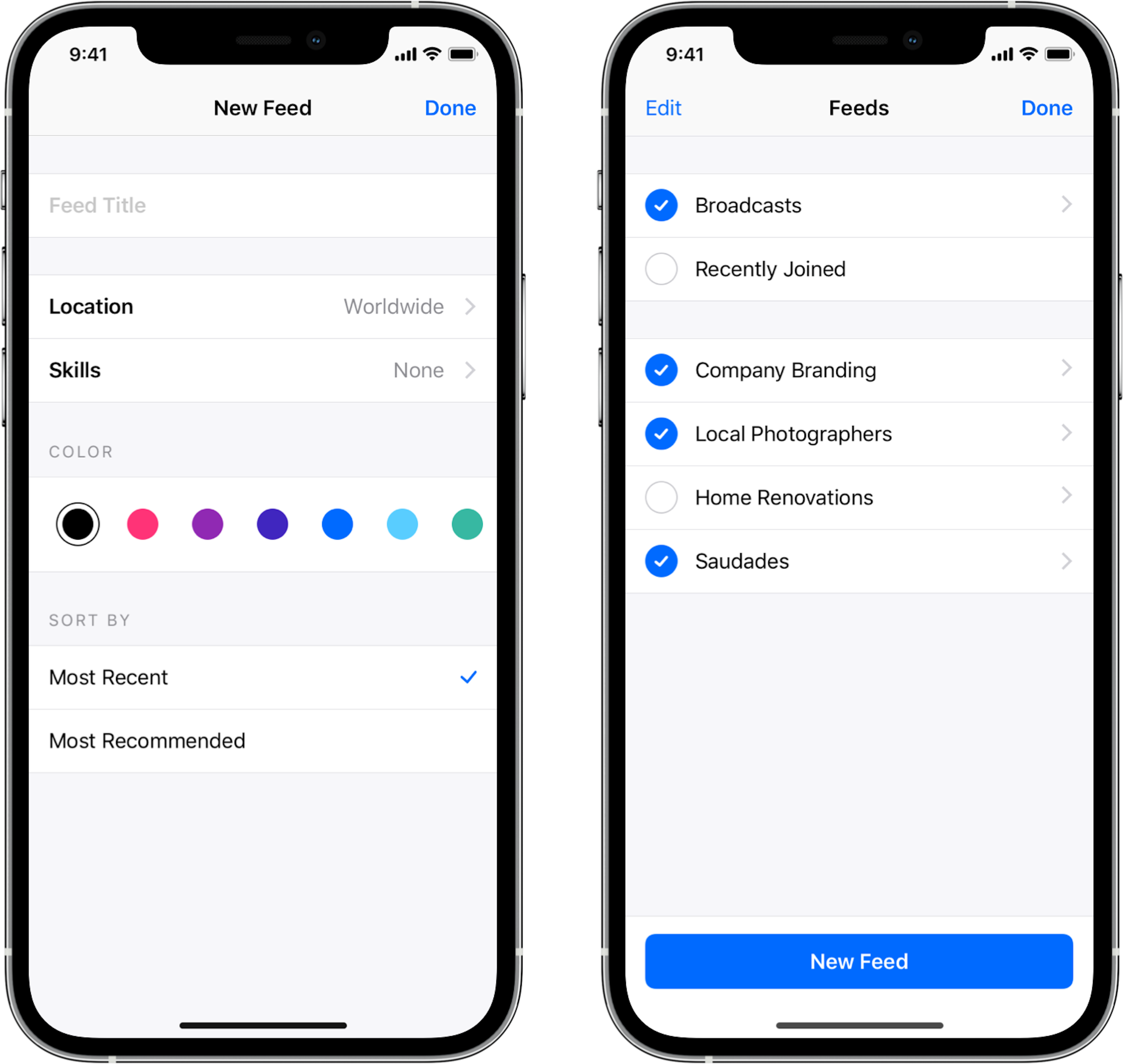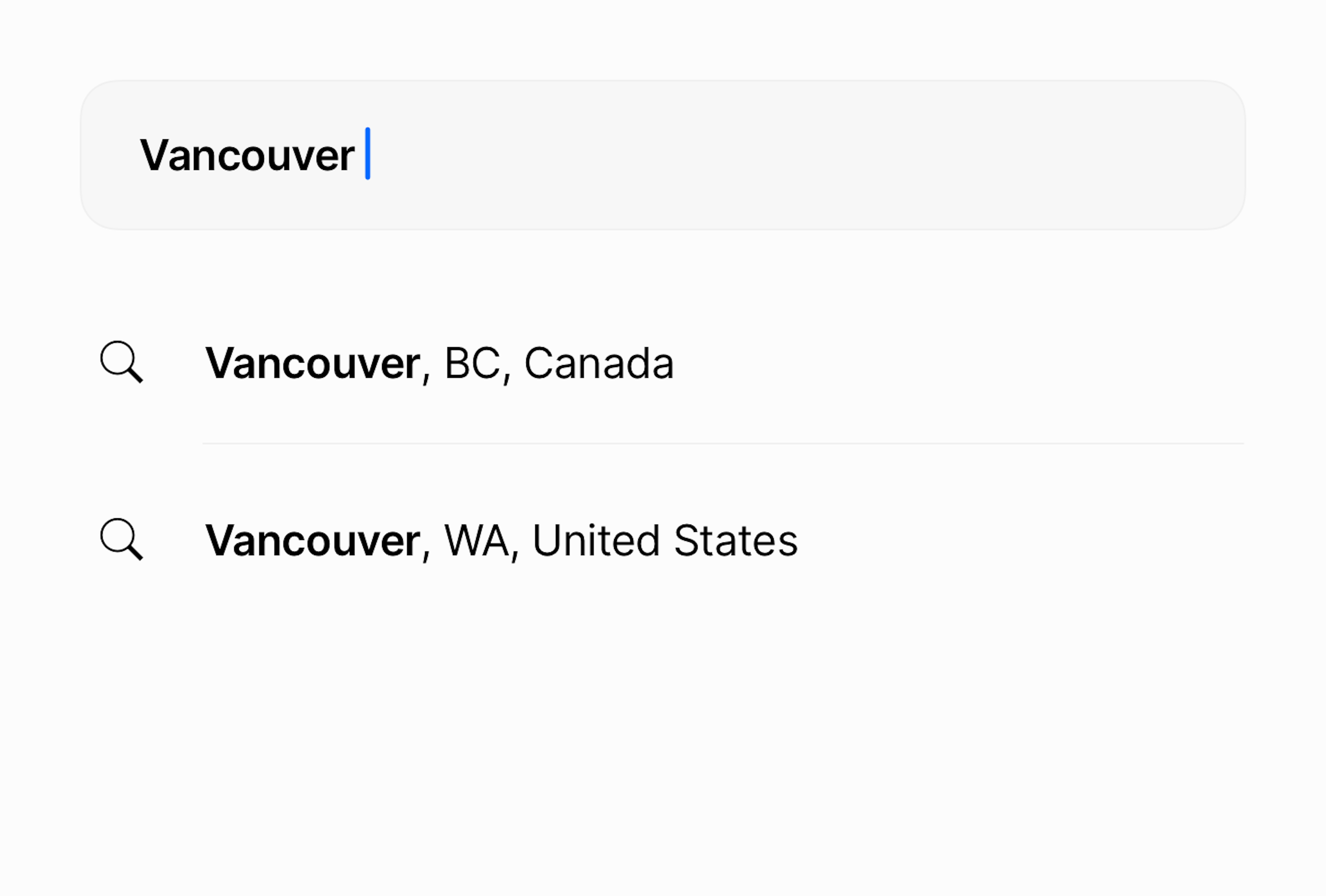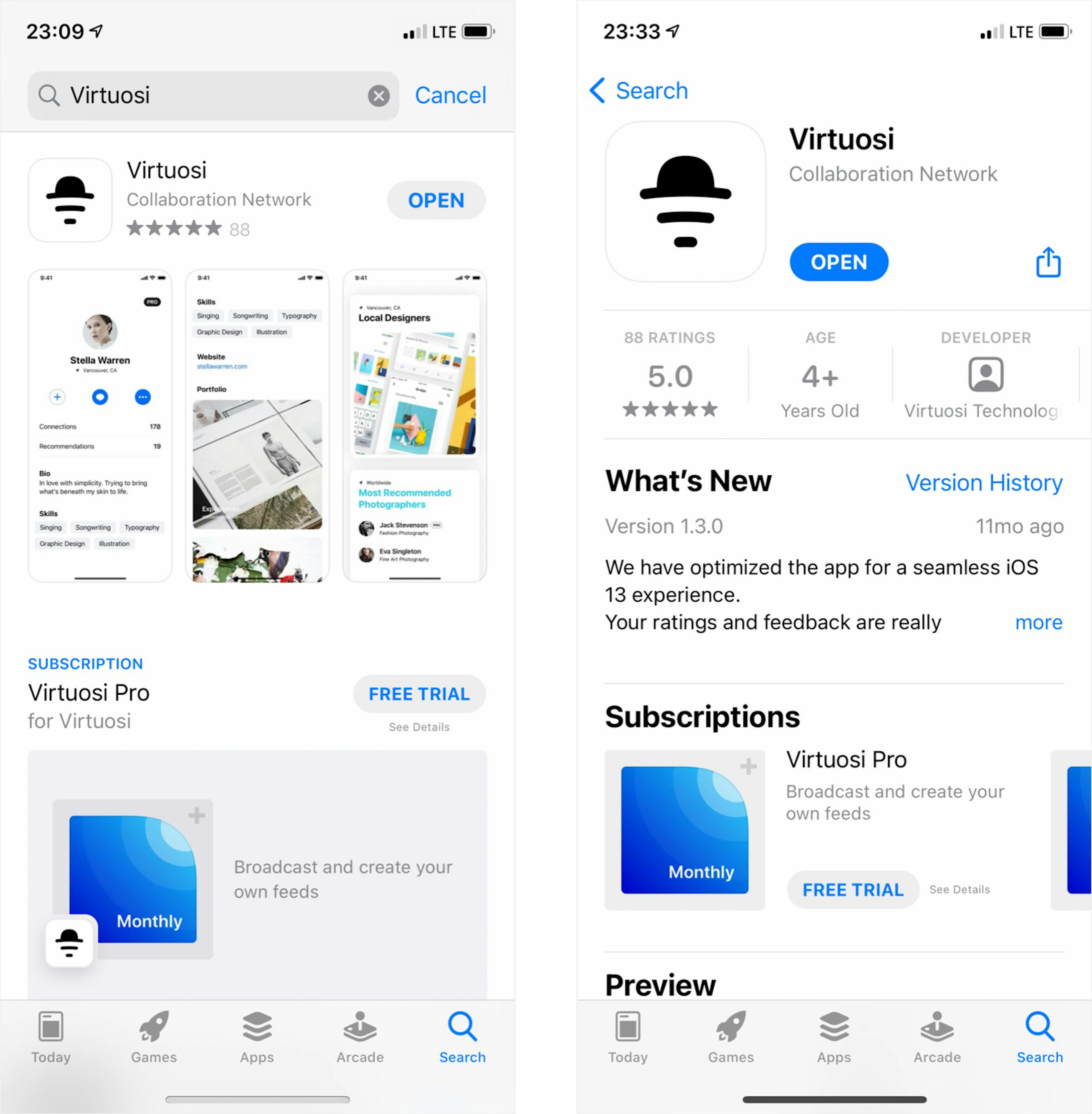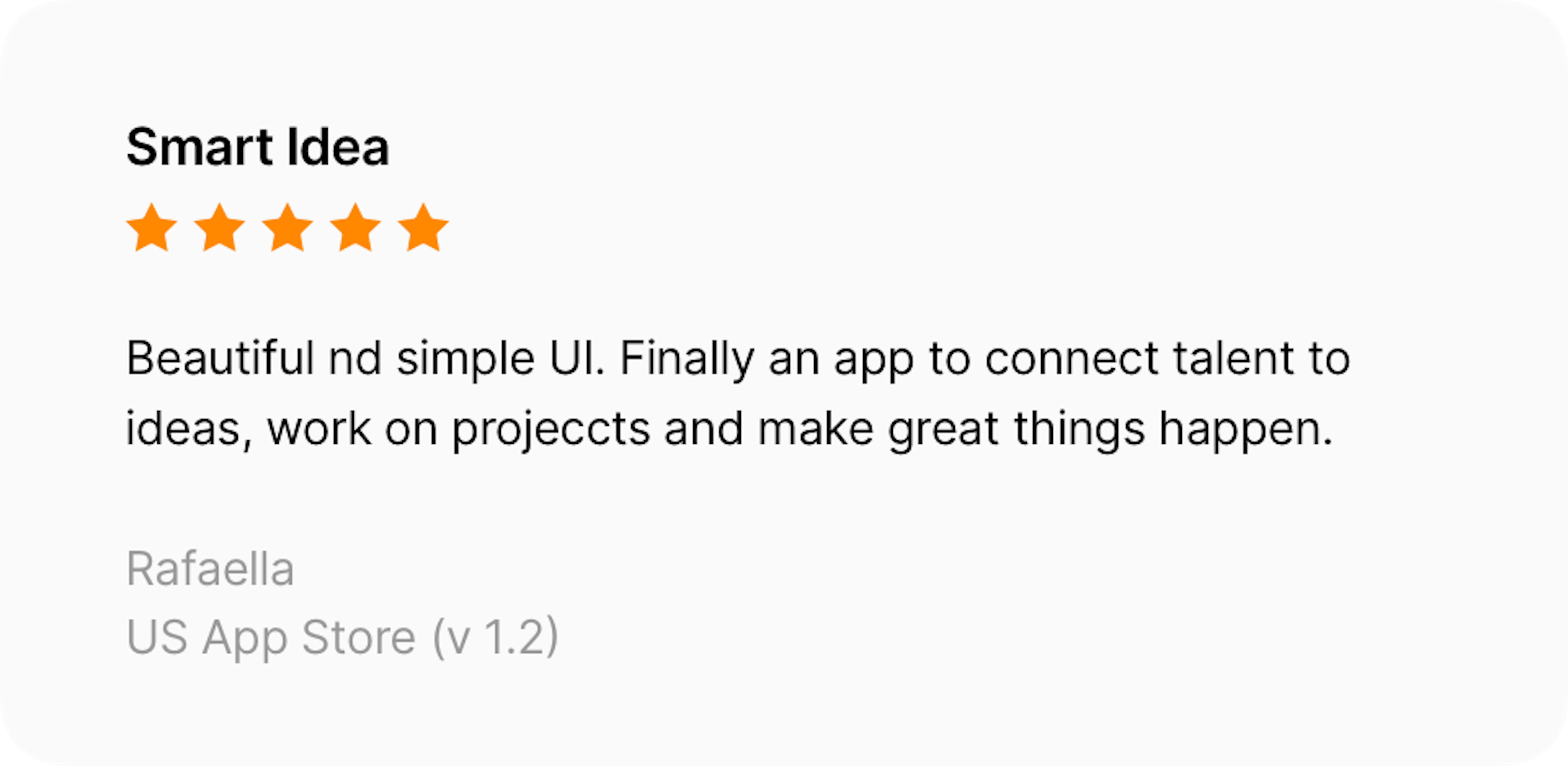Virtuosi
Built around the idea that we are more than a job title, Virtuosi matches people with opportunities based on skills, proficiencies, personality, and values, combining infinitely unique individuals with ideas waiting to happen.
Role
Ideation, Product Strategy, UX Research, Information Architecture, Wireframes, Prototypes, UI Design
Problem
Fragmented Independent Workforce
Independent workers often operate in silos, making it difficult to find and connect with others who possess complementary skills or similar interests. The problem was identified by observing the following trends and challenges, as well as interviewing a wide variety of independent workers:
• Rise of the gig economy.
• Inefficiencies in traditional job platforms, not specifically tailored for independent workers.
• Isolation and lack of community, as Independent workers did not have access to the same networks and resources as those in traditional workplaces.
• Work culture gradually shifting towards more flexibility, remote work, and project-based engagements.
Challenge
Design for meaning
Our challenge was to develop a platform that fosters opportunities for users by enabling them to express their individuality beyond traditional resumes and portfolios, ultimately connecting them with tailor-made opportunities. Existing professional networks, marketplaces, and showcasing applications maintained a rigid divide between service buyers and sellers, failing to recognize the dynamic nature of modern
collaboration driven by individuals who embody both roles.
Our goals were to:
• Make it simple to use, meaningful and personal.
• Create a network that values individuality and fosters a sense of belonging.
• Build a feed centered around skills to allow discovery.
Approach
Lean and meaningful
We opted for an approach which emphasized rapid sketching, prototyping and user feedback.
Although our goal was to develop better functionality than our competitors we clearly didn't want to engage in a short sighted feature parity race. To differentiate ourselves we needed to define a desirable role for the app and how it would meet the needs of our users. We were really excited by the opportunity to create something meaningful..
Stephen Anderson's UX Hierarchy of Needs heavily influenced our product strategy.
Native vs Cross-Platform
Even though we were working with limited financial resources, we decided to start by building a native app for the Apple ecosystem using Swift and avoid cross platform frameworks. In hindsight, this was a good decision that allowed us to design a really delightful user experience without compromise.
Discovery
The entrepreneurial spirit
The discovery phase allowed us to define project milestones, analyze the competitive landscape, and consolidate our vision for the product. We also engaged in a technical discovery phase to understand our capacity and design around technical limitations.
Our persona hypothesis consisted of many different archetypes we used to guide design decisions and facilitate discussions about their different contexts of use, requirements and desires. The most important persona at the centre of what makes Virtuosi desirable for the modern independent worker is the multidisciplinary individual that switches between being a service buyer and a service seller depending on the project. Recruiting talent for big projects, while also looking for opportunities to contribute to other ideas.
Goal Oriented Persona
The status quo
The independent workforce is expanding at a rate three times greater than the overall workforce, with projections indicating that it will constitute over 50% of the working population within the forthcoming decade. Despite this growth, freelancers currently face exploitation by market intermediaries, who impose fees ranging from a substantial 20% to an exorbitant 50%.
• Online marketplaces are designed for businesses
• Showcasing apps are limited to specific fields
• Professional networks are designed as static directories, can be time-consuming and imprecise
• Commission based models force a one-to-one dynamic
• Hire or get hired. What if you frequently do both?
Before I could jump into designing it was important to define individuality beyond resumes and portfolios.
Defining individuality
We interviewed a wide range of potential users from employers and employees, independent workers, hustlers and everyone in between, to understand their priorities as both service buyers and sellers. Following a sorting process the answers were organized based on measurable factors as well as less tangible ones. By considering these less quantifiable elements, we wanted to create a more thorough and precise matching experience compared to existing marketplaces and collaboration platforms.
Personality and social issues stood out as essential to create a meaningful experience, and were noticeably missing from existing professional networks and marketplaces.
Personality types
Vocational interests and interpersonal dispositions have been well researched in adults from the perspectives of Holland’s model of interests, and the Interpersonal Circumplex.
The Holland Codes refers to a theory of careers and vocational choice based on personality types that was initially developed by American Psychologist John L. Holland. It classify personalities into 6 categories: Realistic (Doers), Investigative (Thinkers), Artistic (Creators), Social (Helpers), Entrepreneuring (Persuaders), and Conventional (Organizers).
The basic premise is that one's occupational preferences is in a sense a veiled expression of underlying character.
According to the Holland Personality Types there are 16 career clusters and 79 career pathways to choose from depending on your personality. It is important to note that this approach indicate preference and not ability.
Interpersonal behaviour
The interpersonal circumplex is a model for conceptualizing, organizing, and assessing interpersonal behaviour, traits, and motives. It identifies two main constructs being assertiveness and compassion, having each individual described as a weighted combination of both with one or two dominant behaviours.
At the bottom and top you're inviting the opposite behaviour, while on the left and right you are inviting the same behaviour.
Applying the IPC to team dynamics, teams that tend to be in the green area tend to do well.
Based on the IPC and Holland's Personality Types we created a questionnaire to help determine the dominant personality traits and behaviours of each user, link them to potential career clusters and pathways, and match them with the right opportunity.
Skills and competency
Combined with a proficiency matrix for added granularity and better matching, we built a database with thousands of skills and allowed users to suggest skills that are not already in our database. This approach allowed us to solve some of the critical problems associated with skills.
Same skill spelled differently, like ReactJS, React.js, React JS.
Same skill called differently, like Digital Marketing, Web Marketing, Online Marketing.
Acronyms, like UX, User Experience.
Different meaning depending on context, like Boiler with associations can become Designing Boilers, Repairing of Boilers, Operating of Boilers.
Same words for different meanings, like Product Management.
This approach allowed us to solve some of the critical problems associated with skills that were important to consider for our machine learning model.
By matching people with opportunities based on competencies we wanted to empower a new generation of workers to find work based on what they can do instead of what they have done.
Social Issues
Social issues became an essential aspect of business today. From civil rights, poverty, and access to affordable housing to other more existential concerns like the environment, climate change, and the ethics of scientific research.
Research found that when choosing between job positions of equal perceived value, applicants will choose the company connected to a social issue they care about. By assigning a value to social issues in our machine learning model we wanted to help users choose their opportunities with the same careful deliberation as any personal important decision.
Millennials are more likely to prioritize their personal values ahead of organizational goals.
Links and portfolios
One of the main issues with existing showcasing platforms is that you can only follow users, or scroll through search results when searching for a specific skill. This approach compounded with a chronological or alghoritmic feed, makes it almost impossible to track a specific skill or combination of skills. What we did with Virtuosi is that we gave users the ability to follow skills, locations, or any combination that might be interesting for a potential project they have in mind.
To give as much flexibility as possible users can post links, images, videos, music, text, or even work in progress.
Posts are automatically shared with people subscribed to those skills, shifting the focus on skills rather than entire profiles.
Design
Sketches and Architecture
We took a top‐down approach to defining the overall structure of the user experience. From sketching and storyboarding, I generated a lot of different UI arrangements, functional and data elements, and interactive behaviours. I generated a huge amount of ideas through wireframing, sketching and storyboarding to make the app's architecture as intuitive as possible. Starting with tentative ideas, our vision slowly evolved into something tangible.
After carefully considering how to distribute every user flow to create an intuitive experience, we opted for a tabbed structure to give users an instant overview of what the app can do. It was important to keep the number of tabs to a minimum as tabbed architecture can get quite confusing when the number of tabs increase.
For our secondary architectures, we used pre-dominantly Hub & Spokes and Nested Dolls patterns.
Once the content and functionality of the app approved, I started to structure that content into increasingly granular flows and diagrams.
Signup process prototype using high fidelity wireframes
Matching people with opportunities
From our experience with currently available marketplaces and showcasing networks, we realized that too much time was wasted browsing directories of users with no obvious way to differentiate between them except for their hourly rate and a few portfolio images.
Personalized Feeds
Feeds populated by algorithms often pull users into content consumption and away from the task they're trying to accomplish. That's fine if they're on the bus to work, but if your product exists to help users get things done then feeds can actually get in the way. To improve quality and efficiency we gave users the freedom to create as many feeds as they want based on pre-selected filters, creating content that is always relevant.
Users can create a new feed by choosing the city and skills they're interested in
Or simply create one based on a profile they like
Feeds are no longer populated by opaque algorithms but rather a personalized set of filters defined with a project in mind.
Broadcasts
One of our goals was for users to move away from the traditional ways of hiring or getting hired, and think of Virtuosi as one big team. A network where you can reach people with specific skills and get help from the community. One way of making the network feel like one big team was to move away from one-to-one requests like we find today on existing marketplaces, and move toward a one-to-many approach that removes friction and inefficiencies.
The guesswork disappears by having requests delivered only to users with matching profiles, and inversely people get notified when someone is looking for their skills.
Using machine learning, we automatically extrapolate valuable data from profiles and match them with opportunities tailored to their unique skillset and individuality.
This approach eliminates inefficiencies found in the traditional recruitment practice. By matching people with opportunities based on competencies and personal preferences that evolve with time, we wanted to empower a new generation of workers to find work based on what they can do instead of what they have done.
Messaging
While messaging seemed like a natural extension to Virtuosi, we didn't want to build on a feature parity exercise with platforms like Teams or Slack before testing our product in the real world. Defining essential messaging features without compromising on the network proved to be really difficult. We knew that messaging was necessary, so we decided to progressively add features like file sharing, audio and video messages based on user feedback and how the network evolved.
The Product
Bringing it all to Life
Refinements
Fixing the location database
For our testing process we opted to use a real build of the application to reveal how stable the app was. During this process we noticed usability issues related to search within our location database. Due to the nature of how broadcasting filters are defined, specifying cities, states and provinces meant that we had to re-organize locations following a hierarchy that made sense in the context of recruiting talent. By defining a clear hierarchy between locations without being too granular to become useless, search became much more intuitive and delightful to use.
Flat Locations
Nested Locations
Outcome
Great Potential
Despite promising early signs of traction with around 200 active users, the company was unable to secure additional funds for development and was forced to close in September 2021. Working in an early stage startup has given me a unique opportunity and extensive hands-on experience of product design and management processes in an environment dictated by business objectives, tight schedules, and financial limitations.
<-- Back to Portfolio
I am always on the lookout for collaborations from small personal projects to large corporate contracts.

